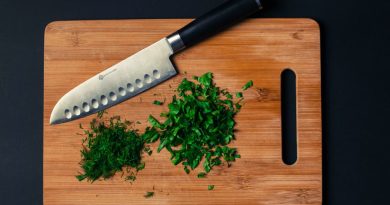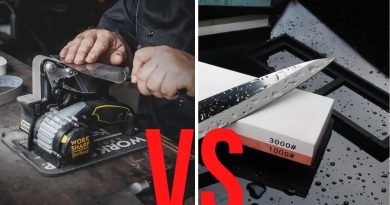Butcher knives, professional kitchen knives which to choose?
Butcher knives names and characteristics
If you are looking for the best butcher knives, but you still cannot distinguish names and characteristics, you are in the right place. Today we help you broaden your knowledge of this sector by remembering the different names that characterize these knives.
Why do butcher knives have different names?
Although it may seem strange to those who are not in the sector, it is good to know that there are many and different types of butcher knives, each with a different blade shape. Each knife is specifically designed to perform a specific function. In fact, there are knives to extract the bones, knives to skin the animal and also knives to extract the internal bowels of the same.
Butcher knives are therefore real tools of the trade, which help to perform the function of the food operator in the different stages of slaughter.
Names and functions of the most common butcher knives:
1) The French knife:
The French knife is one of the most classic slaughter knives. With a straight blade, this butcher’s knife is also very popular among Chefs, having a blade shape quite similar to the most common chef’s knives. In fact, what characterizes the French knife is mostly the size. This butcher’s knife, unlike the most common chef’s knives, is characterized by having a very long blade. Its blade varies from 18 cm, but can extend up to 33.35 cm.
2) The boning knife:
Perhaps the second most popular tool among butcher knives is the boning knife. This type of knife has a particular blade, and its edge can be straight or curved depending on the model. The boning knife, as the name can easily guess, has the purpose of making it easier to extract the osa from the meat.
3) The butcher’s cleaver:

The butcher’s cleaver is probably one of the most popular tools in butchers’ shops. This one in particular is characterized by its robust blade and its imposing weight. In fact, depending on the models, this instrument can weigh up to 2 kg. Its main purpose is the breaking of medium-large bones to separate the meat clearly.
4) The filleting knife:
Among the other best known solutions, we also remember the knife for filleting meat or fish. Given its particular shape, the latter is often also referred to as a scimitar knife. Its function is to fillet the meat or skin the animal if necessary to allow processing.
Butcher knife set
Although butcher knives were born as professional butchery tools, today more and more cooking enthusiasts are choosing to buy a butcher knife set for their kitchen. This is because, unlike the more common kitchen knives, slaughter knives are cheaper and less delicate. Easier to wash, these knives can be put in the dishwasher and their handles have no seams or grooves where food can slip into.
Many lines of butcher knives such as the famous Sanelli Premana Professional knife line is now particularly popular as a line of professional kitchen knives. This is because of the decidedly competitive price of these made in Italy knives, but also because of their captivating design that is easily recognizable.
Conclusion:
In this article dedicated to the world of butcher’s knives, we have had the opportunity to highlight the names and main characteristics that distinguish these kitchen knives. We have in fact talked about the French knife, like the boning knife and finally about the characteristics of a butcher’s cleaver.
Finally, we have seen how these professional kitchen knives today begin or become very popular as knives for the home. The reasons are different, starting from the price, which is lower than the classic kitchen knives up to the greater simplicity of cleaning. In fact, slaughtering knives, being designed to be used in the workplace, are highly hygienic and are made with high-strength materials, which is why they can be washed in the dishwasher.




